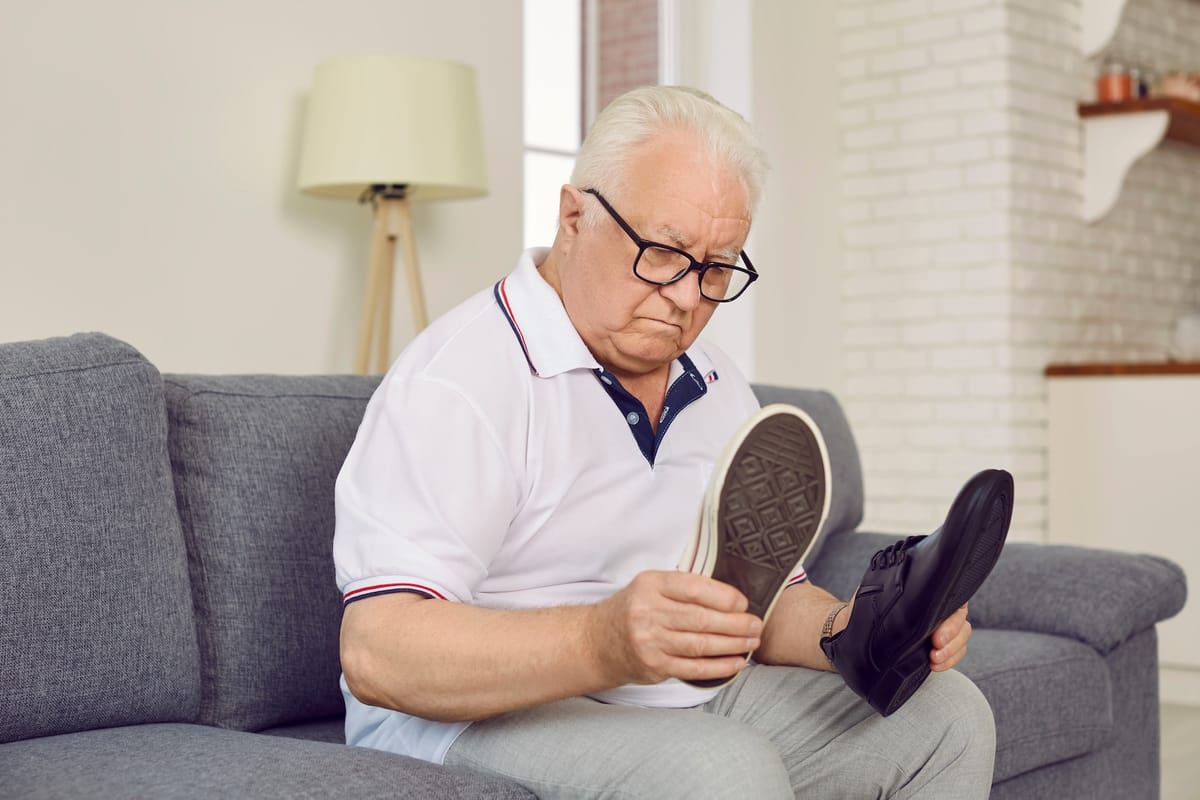

Understanding Fall Risk in Seniors
Falls are a significant concern for many seniors, with serious consequences that can affect their independence and quality of life. As we age, our bodies naturally undergo changes that can increase the risk of falling. These changes include decreased balance, reduced muscle mass, and impaired vision. Wearing the right shoes can play a crucial role in preventing falls by improving stability and balance. This article explores the importance of choosing proper footwear and provides valuable insights into the best shoes for seniors.
Why Shoes Matter for Fall Prevention
Shoes provide essential support and stability, acting as the foundation for our movements. For seniors, this becomes even more critical as they may experience changes in gait, reduced reflexes, and decreased balance. Selecting shoes designed to address these concerns is vital for preventing falls and maintaining mobility.
Here's how appropriate footwear can contribute to fall prevention:
- Improved balance and stability: Shoes with a wider base, a stable heel, and good traction can enhance balance and reduce the risk of slips and trips.
- Enhanced grip and traction: Sole patterns with deep grooves and non-slip materials provide excellent grip on various surfaces, minimizing the chance of falls.
- Shock absorption: Cushioned insoles and midsole technology absorb impact and reduce stress on joints, contributing to overall comfort and stability.
- Proper fit: Shoes that fit snugly and comfortably provide optimal support and prevent blisters and friction, reducing the risk of falls due to discomfort or ill-fitting footwear.
Types of Shoes for Fall Prevention
Several types of shoes are specifically designed to address fall risk in seniors. These include:
- Walking shoes: Comfortable, lightweight walking shoes with excellent arch support and a flexible sole are ideal for everyday use, providing stability and cushioning.
- Cross-trainers: These versatile shoes offer a blend of comfort and support, suitable for various activities, including walking, light exercise, and casual outings.
- Stability shoes: Stability shoes have a wider base and a firmer midsole to provide superior support and stability for people with balance issues. They are often recommended for seniors with foot problems or those who have experienced previous falls.
- Orthopedic shoes: Customized shoes designed by podiatrists can address specific foot problems and provide extra support and cushioning for seniors with specific foot conditions. These shoes can be essential for individuals with diabetes, arthritis, or other foot ailments.
- Slip-resistant shoes: Shoes with textured outsoles and rubber compounds designed to provide superior grip on wet or slippery surfaces are especially important for seniors who may be prone to falls in these conditions.
Features to Look for in Fall Prevention Shoes
When selecting shoes for fall prevention, several key design features enhance stability and reduce the risk of falls:
- Wide base: A wider base provides greater stability and balance, making it less likely to tip or lose footing.
- Stable heel: A low, stable heel with good traction on the outsole prevents tripping and improves balance.
- Cushioned midsoles: Midsoles absorb impact and reduce stress on joints, promoting comfort and stability.
- Flexible soles: Flexible soles allow for a natural gait and reduce the risk of slips and trips.
- Non-slip outsole: Outsole patterns with deep grooves and non-slip materials provide excellent traction on various surfaces, minimizing the chance of falls.
- Secure closure system: Laces, buckles, or Velcro straps should secure the foot comfortably and prevent slipping or loosening, ensuring a stable fit.
- Good arch support: Proper arch support helps maintain foot alignment and reduces strain on the lower leg muscles, enhancing balance and stability.
- Lightweight materials: Lightweight materials reduce fatigue and improve ease of movement, making it easier to stay active and mobile.
Tips for Choosing the Right Shoes
Choosing the right shoes for fall prevention is a personal decision based on individual needs and preferences. Here are some tips to consider:
- Consult a podiatrist: If you have any foot conditions, it’s best to seek professional advice from a podiatrist, who can assess your needs and recommend appropriate footwear.
- Try on shoes in the evening: Your feet tend to swell slightly during the day, so try on shoes in the evening to ensure a comfortable fit.
- Walk around in the shoes: Before purchasing, walk around in the shoes to ensure they feel comfortable and provide adequate support.
- Consider the environment: Choose shoes appropriate for the surfaces and conditions you’ll be walking on, whether it’s indoors or outdoors.
- Replace worn-out shoes: Worn-out shoes lose their supportive properties and can increase the risk of falls. Replace them regularly with new shoes that provide adequate support and cushioning.
- Experiment with different shoe types: Don’t be afraid to try different types of shoes until you find the ones that provide the best fit and support for your needs.
Choosing the right footwear is a crucial step in fall prevention for seniors. By understanding the factors that contribute to fall risk and selecting shoes with appropriate features, we can enhance our stability, balance, and overall mobility. Remember to consult with a healthcare professional or podiatrist to address any specific foot conditions or concerns and to ensure that you are choosing the best shoes for your needs. By making informed choices, you can reduce your risk of falling and maintain your independence and quality of life as you age gracefully.
Dues are $12 per year. Member benefits:
✅ Ad-Free Website Viewing
✅ Advocacy for Republican Seniors
✅ 120+ Senior Discounts
✅ Member Only Newsletters